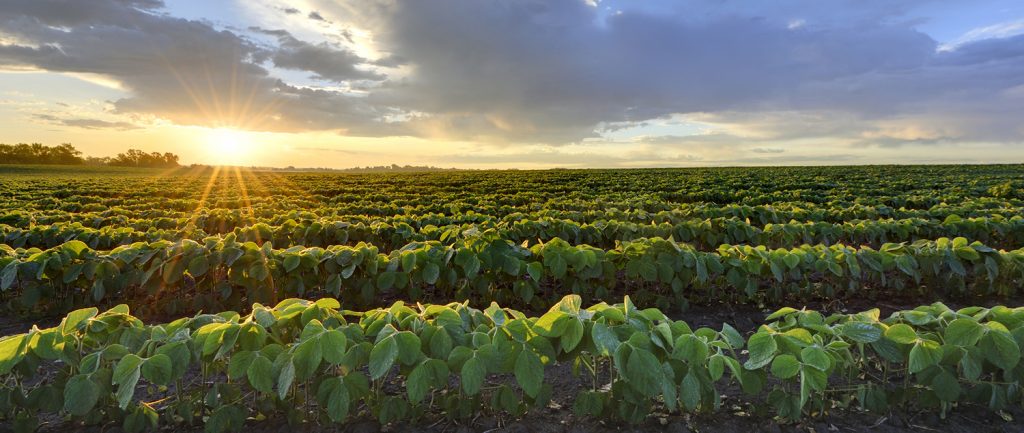In order to preserve crucial technology for the future, the Drift Task Force held a meeting in early September with grower leaders and Minnesota Department of Agriculture officials to discuss over-the-top application of dicamba.
Following the meeting, the Drift Task Force, chaired by Minnesota Soybean Growers Association Vice President Bob Worth, issued a series of recommendations to MDA designed to ensure dicamba can be applied safely in 2022 and beyond.
“We need to keep this tool available for use,” Worth said, “but we need to put certain limitations on it in order to keep it a viable option. Otherwise, we’re in danger of losing dicamba.”
For sites located south of a line stretching across the state from Moorhead to Duluth, the Drift Task Force recommends dicamba products labelled for over-the-top use of dicamba tolerant soybeans should be applied according to the EPA label with the following restrictions:
- No application after June 12
- No application when air temperatures exceed, or are predicted to exceed, 85oF
For areas north of the line, the Drift Task Force recommends dicamba products should be applied according to the EPA label.
“We want to be good stewards, but we don’t want to lose this product and we don’t want farmers against farmers,” Worth said. “We want this product used correctly. We don’t want to pick on dicamba all the time, but this is the one that’s been causing problems.”
Since dicamba was first registered for use on dicamba-tolerant soybeans in the 2017 growing season, MDA has fielded complaints each year of alleged off-site movement onto neighboring property. So far, this year, MDA has fielded more than 300 complaints, the most the department has received in a given growing season. The vast majority of dicamba damage reports are from southern Minnesota; soybeans were far and away the crop most affected.
“Dicamba is still a very useful tool for growers combating resistance weed species,” MDA Director of Pesticide and Fertilizer Management Josh Stamper said. “But like any important tools, there’s a lot of responsibility that comes along with that. In the case of dicamba, there’s a significant amount of legal liability that comes along with the use, and that’s something we saw this year.”
The previous annual totals of complaints were:
2020: 124 reports
2019: 22 reports
2018: 53 reports
2017: 253 reports
An application cutoff date has been in effect in the state each growing season since 2018. The cutoff date for 2021 was June 30. Most of the complaints this growing season occurred later in June.
“We felt more issues happened because of that later date,” Worth said. “Very few of these complaints came in early, and we appreciate MDA giving us all the information needed to come to this recommendation – and that’s what this is, just a recommendation. MDA has the final say on all of this.”
So far, Stamper said all of the dicamba-damage investigations since 2018 have revealed that farmers haven’t been in full compliance of the label. Stamper urged farmers to follow the label and maintain detailed record-keeping when using dicamba.
“A big portion of the compliance with this label is record-keeping and the record-keeping is the growers’ opportunity to demonstrate that they did everything correctly,” Stamper said. “The challenge we’re running into in our investigations is nobody is doing that, and that’s problematic from our end.”
The Drift Task Force was created in 2017. It was the first farmer-led group assembled to examine the data and science behind suspected dicamba damage reports in Minnesota, and find a solution to develop best management practices concerning the use of dicamba in dicamba-tolerant soybeans in the state. Members from both MSGA and Minnesota Soybean Research & Promotion Council, including Chair Joe Serbus, serve on the Drift Task Force.
Worth commended MSGA President Mike Skaug for placing growers from throughout Minnesota on the Drift Task Force. “Mike Skaug has set up a Drift Task Force that has people scattered all over the state, so we have great representation,” Worth said.
Stamper called upon growers to participate in MDA’s annual Pesticide and Fertilizer Use Survey, which helps track the use of agricultural products on Minnesota farms. That data will help inform Commissioner Thom Petersen’s decision on dicamba use for the 2022 growing season.
“It’s going to be very challenging for us to use the existing federal label in Minnesota,” Stamper said.




